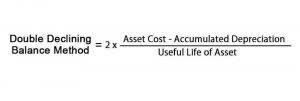
The numbers in a company’s financial statements reflect the company’s business, products, services, and macro-fundamental events. These numbers and the financial ratios or indicators derived from them are easier to understand if you can visualize the underlying realities of the fundamentals driving the quantitative information. For example, before you start crunching numbers, it’s critical to develop an understanding of what the company does, its products and/or services, and the industry in which it operates. The net income calculated at the end of the income statement is added to retained earnings, which is required to complete the statement of changes in equity. After all, preparing financial statements requires a working knowledge of accounting concepts like double-entry accounting, accrual basis accounting, and the accounting cycle.
- Thanks to GAAP, there are four basic financial statements everyone must prepare .
- Other comprehensive income refers to gains and losses that don’t appear on the income statement because the company hasn’t realized them yet.
- We also know that the owner put in $20,000 at the beginning of the month and took out $4,000 at the end of the month.
- The statement of owner’s equity is a summary of the business owner’s investment in the business.
- Forecasting your business’s future cash flow can help you predict financial problems and give you a clear picture of your company’s financial future.
- The cash flow statement reconciles the income statement with the balance sheet in three major business activities.
Examples of Post-Closing Entries in Accounting

In another instance, if an enterprise raises additional share capital, this will induce modification of its Statement of Owners’ Equity and Statement of Financial Position concurrently. It may almost seem magical that all line items eventually mesh together and balance. Customers, suppliers, potential investors, employees, and creditors are just among a few of them. Those directly concerned with the financial health of a particular business analyze their Annual Report to obtain relevant data. Typically, the Statement of Comprehensive Income is prepared on an annual basis. However, most publicly-traded companies produce a Profit & Loss Statement quarterly or for a 6-month period.
Statement of Owner’s Equity
- The last line of your income statement, called the bottom line, shows you net income or loss.
- After you gather information about the net profit or loss, you can see your total retained earnings and, if applicable, how much you will pay to investors.
- While doing that, you will get valuable know-how from industry experts and become a certified professional.
- Again, your balance sheet lists all of your assets, liabilities, and equity.
Nonprofit entities use a similar set of financial statements, though they have different names and communicate slightly different information. Like the income statement and the statement of owner’s equity, the statement of cash flows reports a period of time (in this case the month of October). General purpose financial statements provide much of the information needed by external users of financial accounting.

The Adjusted Trial Balance
Your business’s financial statements give you a snapshot of the financial health of your company. Without them, you wouldn’t be able to monitor your revenue, project your future finances, or keep your business on track for success. Prudent investing practices dictate financial statements are typically prepared in the following order that we seek out quality companies with strong balance sheets, solid earnings, and positive cash flows. Generally Accepted Accounting Principles (GAAP) are the rules by which publicly-owned United States companies must prepare their financial statements.

Once you have the closing balance for the retained earnings account, add it to the opening balance of owners’ equity. The sub-ledger accounts are then aggregated into five general ledger categories (income, expenses, assets, liabilities, and equity). After a stint in equity research, he switched to writing for B2B brands full-time. Arjun has since written for investment firms, consultants, and SaaS brands in the Accounting and Finance space. For example, some investors might want stock repurchases, while others might prefer to see that money invested in long-term assets. A company’s debt level might be fine for one investor, while another might have concerns about the level of debt for the company.
- This financial statement shows a company’s total change in income, even gains and losses that have yet to be recorded in accordance with accounting rules.
- The statement of cash flows classifies cash receipts and disbursements as operating, investing, and financing cash flows.
- These statements are essential for assessing the current state of your business’s finances, as well as projecting future earnings.
- Thus, it helps us understand whether the operations of a firm have created economic value over a certain timeframe..
- If expenditures were greater than the revenues, the business experienced a net loss for the period.
- Normally, such statements are prepared for two consecutive periods—the current year and the comparative previous year.
- Other income could include gains from the sale of long-term assets such as land, vehicles, or a subsidiary.
- It shows any capital the owner put into the business, any withdrawals made as a salary, and the net income or net loss from the current period.
- Since cash flows are vital to a company’s financial health, the statement of cash flows provides useful information to management, investors, creditors, and other interested parties.
- For example, assets include cash, accounts receivable, property, equipment, office supplies and prepaid rent.
The balance sheet lists the company’s assets, liabilities, and equity (including dollar amounts) as of a specific moment in time. That specific moment is the close of business on the date of the balance sheet. Notice how the heading of the balance sheet differs from the headings on the income statement and statement of retained earnings. A balance sheet is like a photograph; it captures the financial position of a company at a particular moment in time.
Statement of Functional Expenses

Check out our FREE guide, Use Financial Statements to Assess the Health of Your Business, to learn more about the different types of financial statements for your business. Now that you know all about the four basic financial statements, read on to learn what financial statement is prepared first. Your balance sheet is a big indicator of your company’s current and future financial health.